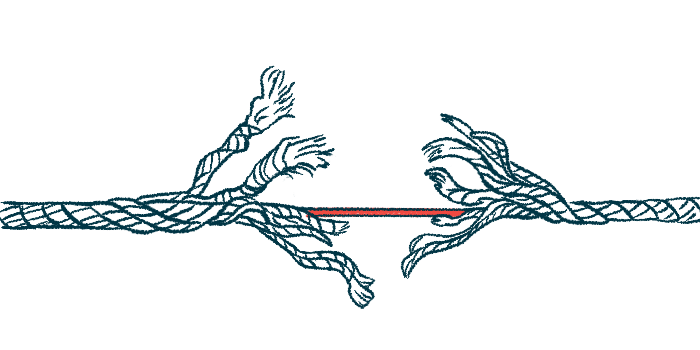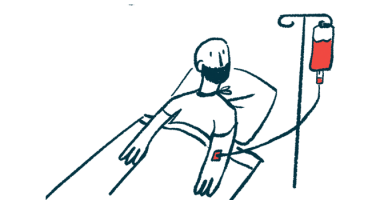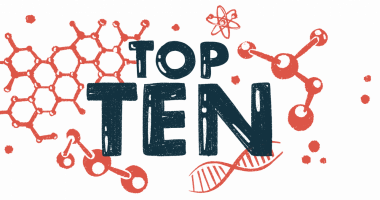Rescue therapy use can reduce myasthenic crisis deaths: Scientists
Study IDs pneumonia, tumors as risk factors for prolonged ventilation in MG

Timely rescue therapy use during a myasthenic crisis — a life-threatening complication of myasthenia gravis (MG) marked by severe breathing problems — can reduce mortality among patients.
That’s according to new findings from researchers in China, who investigated risk factors associated with prolonged mechanical ventilation, which is commonly required for people with MG who experience a myasthenic crisis.
Their study identified thymoma — the presence of a tumor in the thymus — levels of carbon dioxide in a patient’s blood before a crisis, and pneumonia as independent risk factors for prolonged ventilation in these patients.
“These findings highlighted the importance of timely rescue therapies, pneumonia prevention, and early risk stratification based on the clinical phenotype [disease characteristics] in patients with [myasthenic crisis],” the researchers wrote.
The study, “Independent risk factors for in-hospital outcome of myasthenic crisis: a prospective cohort study,” was published in the journal Therapeutic Advances in Neurological Disorders.
Researchers seek evidence on factors impacting mechanical ventilation
MG is an autoimmune condition in which the immune system mistakenly attacks proteins at the neuromuscular junction, which is the region where nerve cells and muscles communicate to coordinate voluntary movements.
In most patients, the disease is caused by self-reactive antibodies targeting acetylcholine receptors (AChRs) on muscle cells, which respond to nerve signals sent to elicit muscle contraction. Less commonly, these antibodies target other proteins involved in nerve-muscle communication, such as muscle-specific kinase (MuSK).
MG symptoms include muscle weakness and fatigue. When the disease affects respiratory muscles, patients can be at risk for experiencing a myasthenic crisis, or acute breathing problems that require hospitalization. In such cases, patients may need temporary breathing support through an oxygen mask or a ventilator.
In many cases, therapeutic plasma exchange or intravenous (into-the-vein) immunoglobulin is used as a rescue therapy to effectively treat a myasthenic crisis.
“However,” the researchers noted, “not every [myasthenic crisis] responds well to rescue therapies, and the determinants for [outcomes] with the evidence from prospective cohorts [patient studies] are still lacking.”
That lack of information led the team of scientists, from Shanghai, to explore the risk factors that might be associated with the in-hospital outcomes of these crises. The team analyzed 90 myasthenic crises that occurred in 76 patients who received a standard regimen of care with rescue therapy.
The patients had a mean age of 52.9 years at the time they were admitted to the hospital. Nearly two-thirds were women (63.2%) and had MG associated with a thymoma (63.2%), or a tumor in the thymus gland, which is part of the immune system.
For all the myasthenic crises, the mean time from MG onset to the current event was 50.1 months. The average duration of mechanical ventilation was 17.1 days, with two patients dying during their hospital stay.
The researchers noted that the relatively low mortality rate observed in this study “might be attributed to the rapid stratification and active intervention in [myasthenic crisis] patients.” With stratification, patients are separated based on established criteria.
Most patients (92%) had anti-AChR antibodies, while about 5% had anti-MuSK antibodies, and about 3% were seronegative, meaning they had neither anti-AChR nor anti-MuSK antibodies.
Timely use of rescue therapy in ongoing care linked to better outcomes
Before a myasthenic crisis, the most commonly used medication was pyridostigmine (sold as Mestinon), a muscle-strengthening medicine taken by a little more than 80% of patients. This was followed by glucocorticoids, used by about the same percentage of patients. Other immunosuppressant treatments used to control immune activity included tacrolimus, taken by 20%, and mycophenolate mofetil and azathioprine, each taken by a little more than 3% of patients. Cyclophosphamide was used by about 1% of patients.
Compared with patients with anti-AChR antibodies, those with anti-MuSK antibodies spent significantly less time on ventilatory support (5.2 vs. 17.4 days). The anti-MuSK patients also had a shorter hospital stay (16 vs. 34.4 days), and a shorter intensive care unit stay (6 vs. 19.2 days).
According to the days spent on mechanical ventilation, myasthenic crisis events were divided into two groups: early withdrawal, meaning patients were weaned off mechanical ventilation within 15 days; and late ventilation withdrawal, meaning mechanical ventilation was required for more than 15 days.
When comparing the two groups, the researchers found that a history of thymoma and in-hospital pneumonia were associated with an increased risk for prolonged mechanical ventilation.
Another independent risk factor for prolonged ventilation identified by researchers was the partial pressure of carbon dioxide — a measure of carbon dioxide levels in the blood that often serves as a marker of lung function — before a crisis.
Our study revealed two additional risk factors, thymoma, and [levels of carbon dioxide] in blood gas, which might help in the early stratification of patients with worse prognoses and intervention for a better in-hospital outcome of [myasthenic crisis].
The team noted that their findings were consistent with those of other studies in which pneumonia was identified as a risk factor for prolonged mechanical ventilation in MG patients having a myasthenic crisis.
“Our study revealed two additional risk factors, thymoma, and [levels of carbon dioxide] in blood gas, which might help in the early stratification of patients with worse prognoses and intervention for a better in-hospital outcome of [myasthenic crisis],” the researchers wrote.
Key to better outcomes, the team noted were “active intervention” in treating patients during crises and the use of rescue therapy during ongoing care.
Noting that all patients in this study had been treated with a rescue therapy, the team concluded that “the efficacy of rescue therapies in treating crisis was again validated in this real-world cohort.”
In recent years, “with timely rescue therapies and prospective follow-ups, the in-hospital outcome of [myasthenic crises] was substantially improved,” the researchers added.
Given that their study only included a small number of patients who received the same regimen of rescue therapies for a myasthenic crisis, the team noted that a future study with a larger sample size is required to validate the risk factors for in-hospital outcomes.









